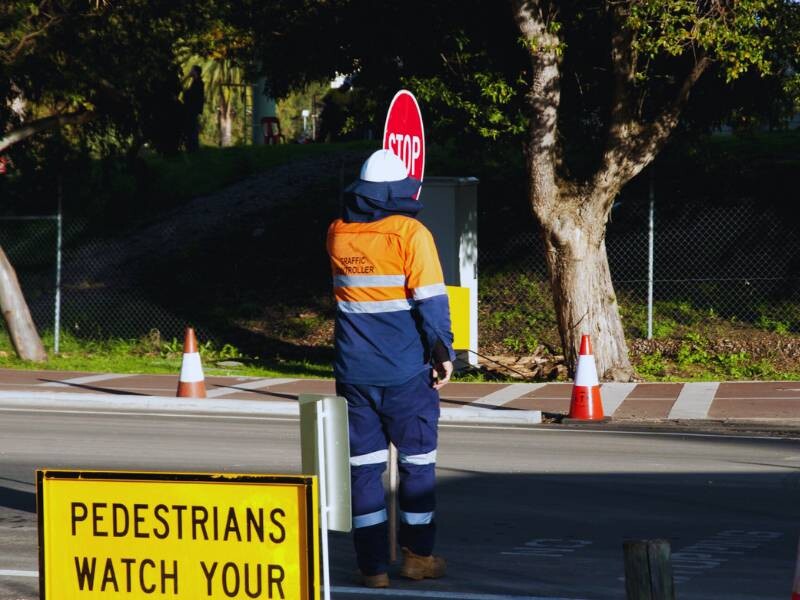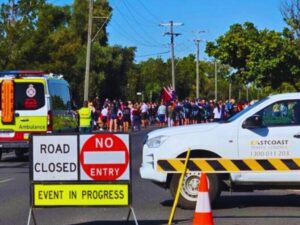Australia’s roads are constantly evolving, with upgrades, repairs, and major infrastructure projects taking place year-round. While these works improve safety and efficiency in the long run, roadworks themselves can pose significant risks to both workers and motorists. Many drivers underestimate the dangers of these work zones, leading to accidents, delays, and costly damages. Understanding these risks is crucial for ensuring a safer journey for everyone on the road.
Why Roadwork Zones Are High-Risk Areas
Roadworks are more than just a temporary inconvenience—they’re carefully planned operations designed to improve road conditions. However, they also create unpredictable environments where traffic patterns change, speed limits drop, and workers operate heavy machinery close to moving vehicles.
Factors that make roadwork zones hazardous include:
Reduced lanes and shifting traffic patterns
Uneven road surfaces, potholes, and loose gravel
Narrow shoulders and sudden lane merges
Increased pedestrian activity (construction workers and supervisors)
Temporary signage that may be unfamiliar to motorists
Common Risks Motorists Face in Roadwork Zones
1. Sudden Lane Merges and Traffic Changes
One of the biggest dangers of roadworks is the sudden change in road conditions. A previously open lane might be closed off, requiring a last-minute merge into slow-moving traffic. Without proper attention, drivers can misjudge distances, leading to rear-end collisions or sideswipes.
2. Reduced Visibility and Confusing Signage
Temporary signage is essential in roadworks, but it can sometimes be difficult to interpret, especially at night or in poor weather conditions. Flashing lights, unfamiliar detours, and abrupt changes to road layouts can leave drivers confused, increasing the likelihood of mistakes and accidents.
3. Loose Debris and Uneven Road Surfaces
Gravel, dirt, and broken asphalt are common in work zones, making roads slippery and unpredictable. Vehicles traveling at high speeds through these areas can lose traction, increasing the risk of skidding or punctured tyres.
4. The Danger of Speeding in Roadworks
Despite clear signage, speeding through work zones is a common issue. Many motorists fail to slow down, thinking the reduced speed limits are unnecessary. However, roadwork zones have unpredictable hazards—workers moving between lanes, sudden stops, and heavy machinery operating close to the road. High speeds can significantly reduce a driver’s reaction time, making collisions more likely and more severe.
5. Increased Risk to Roadworkers
Construction workers operate just metres away from moving vehicles, often relying on barriers and reduced speed limits for their safety. Unfortunately, speeding and distracted drivers put their lives at risk. Accidents in work zones not only endanger motorists but can have devastating consequences for the people maintaining and repairing our roads.
How Drivers Can Stay Safe in Roadwork Zones
Follow Speed Limits and Warning Signs
Speed limits in work zones are there for a reason. Even if the road looks clear, reduced speeds ensure you have enough time to react to unexpected changes. Pay close attention to temporary signage, as road conditions can change daily.
Keep a Safe Following Distance
Tailgating in a roadwork zone is a recipe for disaster. Vehicles ahead may need to stop suddenly, and loose gravel or uneven surfaces can make braking unpredictable. Keeping a safe distance reduces the risk of rear-end collisions.
Stay Alert and Avoid Distractions
Put your phone away, lower the music, and focus entirely on the road. Construction zones require full concentration to navigate safely. Avoiding distractions can mean the difference between a safe trip and a serious accident.
Be Patient and Plan Ahead
Delays are common in roadwork areas, so factor in extra travel time. Rushing through a work zone increases the likelihood of accidents. If possible, check road updates and plan alternative routes to avoid major construction areas.
Respect Traffic Controllers and Road Workers
Traffic controllers are there to keep everyone safe—follow their instructions without hesitation. Their job is to manage traffic flow, ensure the safety of workers, and prevent accidents. A simple gesture like slowing down and making eye contact can make a big difference in ensuring everyone’s safety.
The Role of Traffic Management in Road Safety
Traffic control services play a crucial role in ensuring that roadworks are conducted safely and efficiently. Companies like East Coast Traffic Control provide expert planning, signage, and on-ground management to minimise risks for both motorists and workers. By implementing proper traffic control measures, they help prevent accidents and keep projects running smoothly.
Final Thoughts
Roadworks are an essential part of maintaining and improving our road networks, but they also present serious risks. By staying informed, following roadwork safety guidelines, and respecting speed limits, motorists can play a crucial role in reducing accidents and keeping workers safe.
Next time you approach a roadwork zone, remember: slow down, stay alert, and drive cautiously—it could save a life.
FAQs
1. Why do speed limits change in roadwork zones?
Speed limits are reduced to protect both motorists and workers. Lower speeds allow for better reaction times and safer navigation through changed road conditions.
2. What should I do if I miss a detour sign?
If you miss a detour, do not panic or make sudden moves. Continue driving until you find a safe place to turn around or follow posted signs to get back on track.
3. Can I be fined for speeding in a roadwork zone even if no workers are present?
Yes, reduced speed limits apply at all times, even if workers are not visible. Fines and penalties can be significant, and cameras are often used to enforce compliance.
4. How can I check for roadworks before I travel?
You can check roadwork updates on your state’s transport department website or use traffic apps like Google Maps or Waze to see real-time conditions.
5. What is the best way to drive safely through a roadwork zone?
Reduce speed, stay alert, maintain a safe following distance, obey traffic controllers, and avoid distractions. Patience and caution are key to navigating work zones safely.





